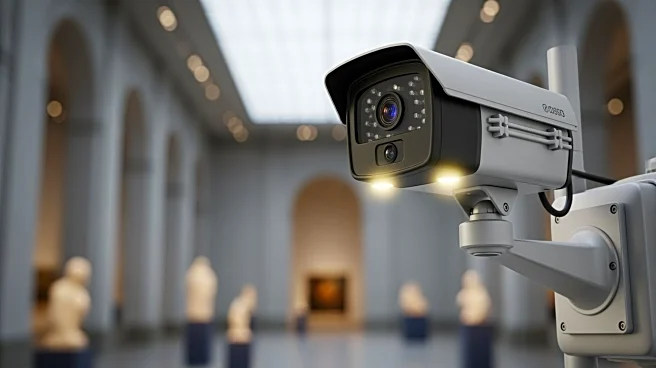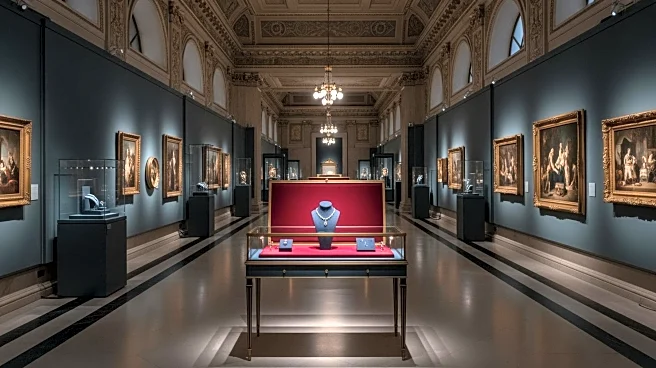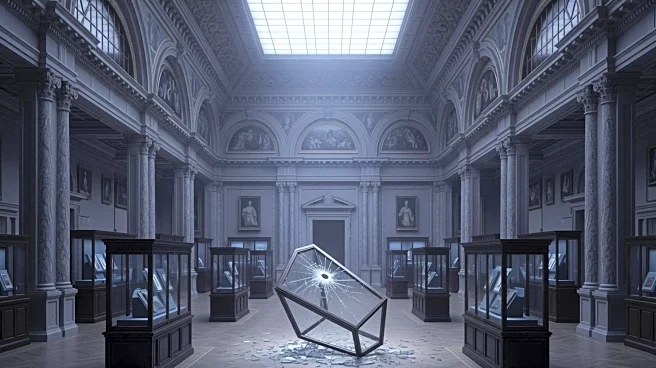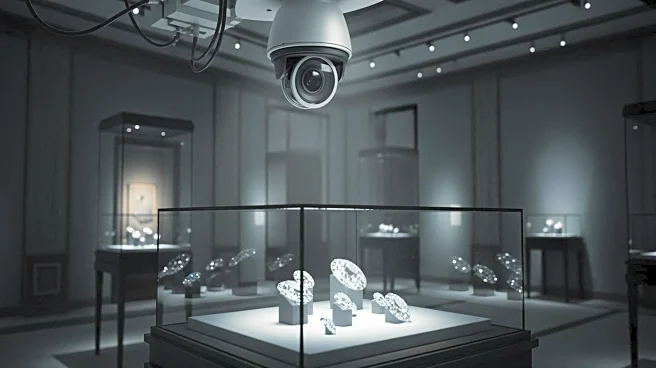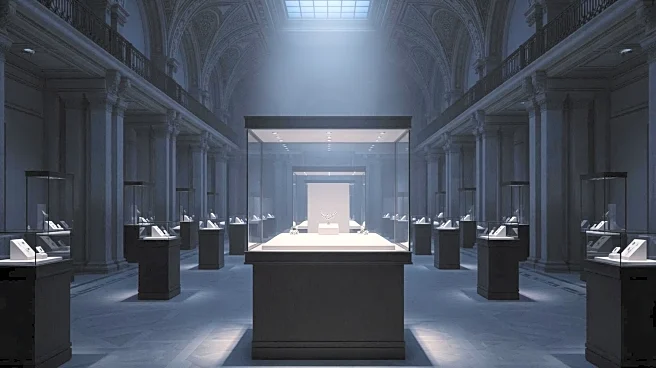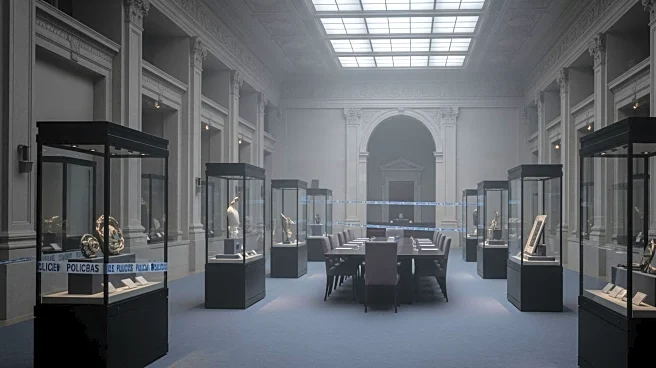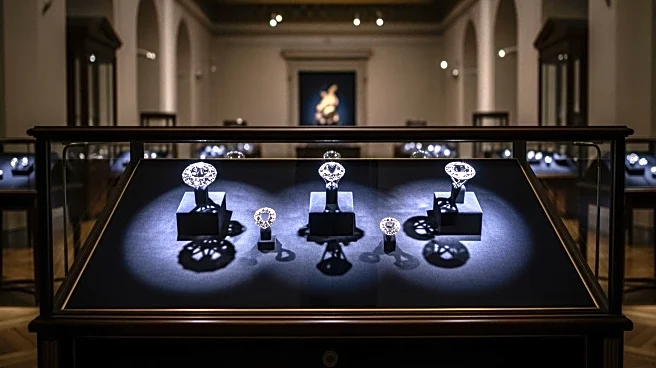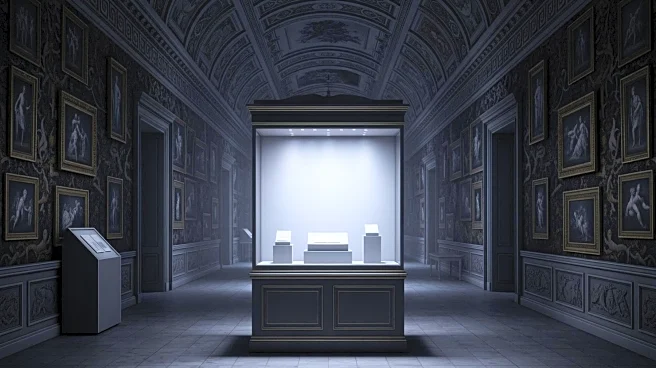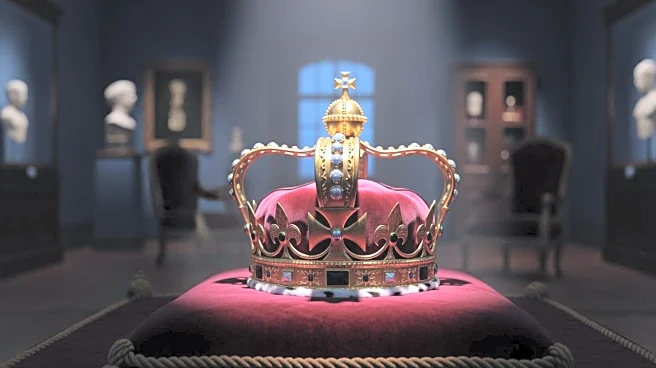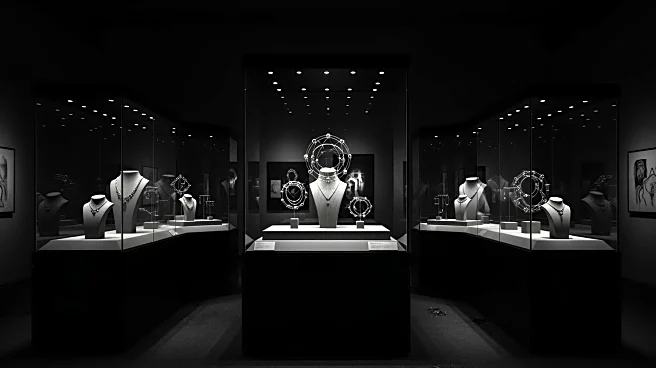What's Happening?
France's Justice Minister, Gerald Darmanin, has acknowledged significant security lapses at the Louvre Museum in Paris following the theft of imperial jewels. The incident occurred in broad daylight on
Sunday, when robbers managed to steal eight invaluable items, including a diamond-and-emerald necklace. The thieves used a truck equipped with a furniture lift to access the museum, executing the heist within minutes. The theft has prompted the French government to express concern over the country's image, as the ease of the robbery highlights vulnerabilities in the security measures at one of the world's most famous museums. The Louvre remains closed to the public, despite plans to reopen on Monday.
Why It's Important?
The theft of imperial jewels from the Louvre Museum underscores critical security challenges faced by cultural institutions worldwide. This incident not only tarnishes France's reputation but also raises questions about the adequacy of security protocols at major tourist attractions. The stolen items, being of significant historical and monetary value, represent a substantial loss to France's cultural heritage. The event may lead to increased scrutiny and pressure on the French government to enhance security measures at national landmarks, potentially influencing public policy and resource allocation towards cultural preservation and security.
What's Next?
In response to the theft, the French government is likely to conduct a thorough investigation into the security breaches at the Louvre Museum. This may involve reviewing and upgrading security systems to prevent future incidents. Additionally, there could be diplomatic and cultural implications, as the stolen jewels are of imperial significance. The government may also face pressure from international stakeholders to recover the stolen items and restore confidence in the security of France's cultural assets.
Beyond the Headlines
The theft at the Louvre may prompt broader discussions on the ethical responsibilities of governments to protect cultural heritage. It could lead to international collaborations aimed at improving security standards at museums and historical sites. Furthermore, the incident might influence cultural policies, emphasizing the need for balancing public access with the protection of valuable artifacts.
